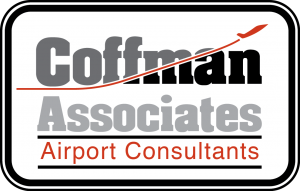What We Do – Airport Master Plans
by Chandra Burks, Airport Planner
What is an Airport Master Plan?
An airport master plan is a comprehensive, long-range study of every physical aspect of an airport. From runways and taxiways to passenger terminals, hangars, aprons, parking facilities, and more, the plan evaluates every aspect of the airport. The primary product is a roadmap for the airport’s future development to ensure it meets projected demand and serves in its designated role within the national airspace system.
What is the Master Plan Process?
A master plan commonly includes these key elements: Inventory, Aviation Demand Forecasts, Facility Requirements, Alternatives, Recommended Development Concept, and Capital Improvement Program.
The first element is an inventory of both the airside (runway and taxiway system, navaids) and landside (terminal, hangars) facilities. This is simply an information-gathering exercise to determine the current condition of the airport. Next are the aviation demand forecasts where data collected during the inventory is used to project the future condition of the airport in terms of based aircraft, operations, enplanements, and critical design aircraft. The facility requirements element is a gap analysis of what facilities are needed in the future compared to what is currently available. Alternatives explores different options and projects the airport could pursue to meet the projected facility requirements. After a thorough evaluation of all alternatives, a recommended development concept is put forth that outlines the long-range development plan for the airport. From there, the recommended projects are broken out individually so that a cost evaluation can be made and a financial program developed within the capital improvement program element.
The primary goal of the planning process is to provide the airport and its sponsor with a comprehensive plan that can be used to secure funding, improve facilities as needed, and continue as an important asset to the community. Of course, this can’t be done without support from the community. Getting this buy-in is critical, so public outreach is an integral part of the master planning process. Through workshops and open houses designed to facilitate discussion, as well as options to submit comments or ask questions, a fully transparent planning process can help achieve the public support needed for the airport’s further success.
Why Do Airports Need Master Plans?
The Federal Aviation Administration (FAA) recommends that airports update their master plans every seven to ten years. There are various reasons for an update. For example, conditions at an airport can and do change. Whether it’s something that is happening on the field, such as demand from a new tenant that dictates new or expanded facilities, or something going on outside of the airport, like a change in the community or economy, these are events that can warrant an update to the airport’s master plan.
Master plans are also undertaken so airports can secure funding to improve or expand their facilities. Oftentimes, before the FAA will commit grant funding through the Airport Improvement Program (AIP), the airport must demonstrate appropriate need for the improvement– a justification which is typically made within in the pages of a master plan. However, if the development cannot be justified, the master plan can explore other areas where the airport may be better served to focus their attention.
At Coffman Associates, our mission has always been to provide the very best planning services possible. Airport master plans make up a crucial part of our service suite, as well as the foundation necessary for airport development projects. A well-reasoned and thoughtful planning document will help guide an airport to future successes.
Want to know more about master plans? Email Chandra, cburks@coffmanassociates.com and check out our most recent airport master plans here.

